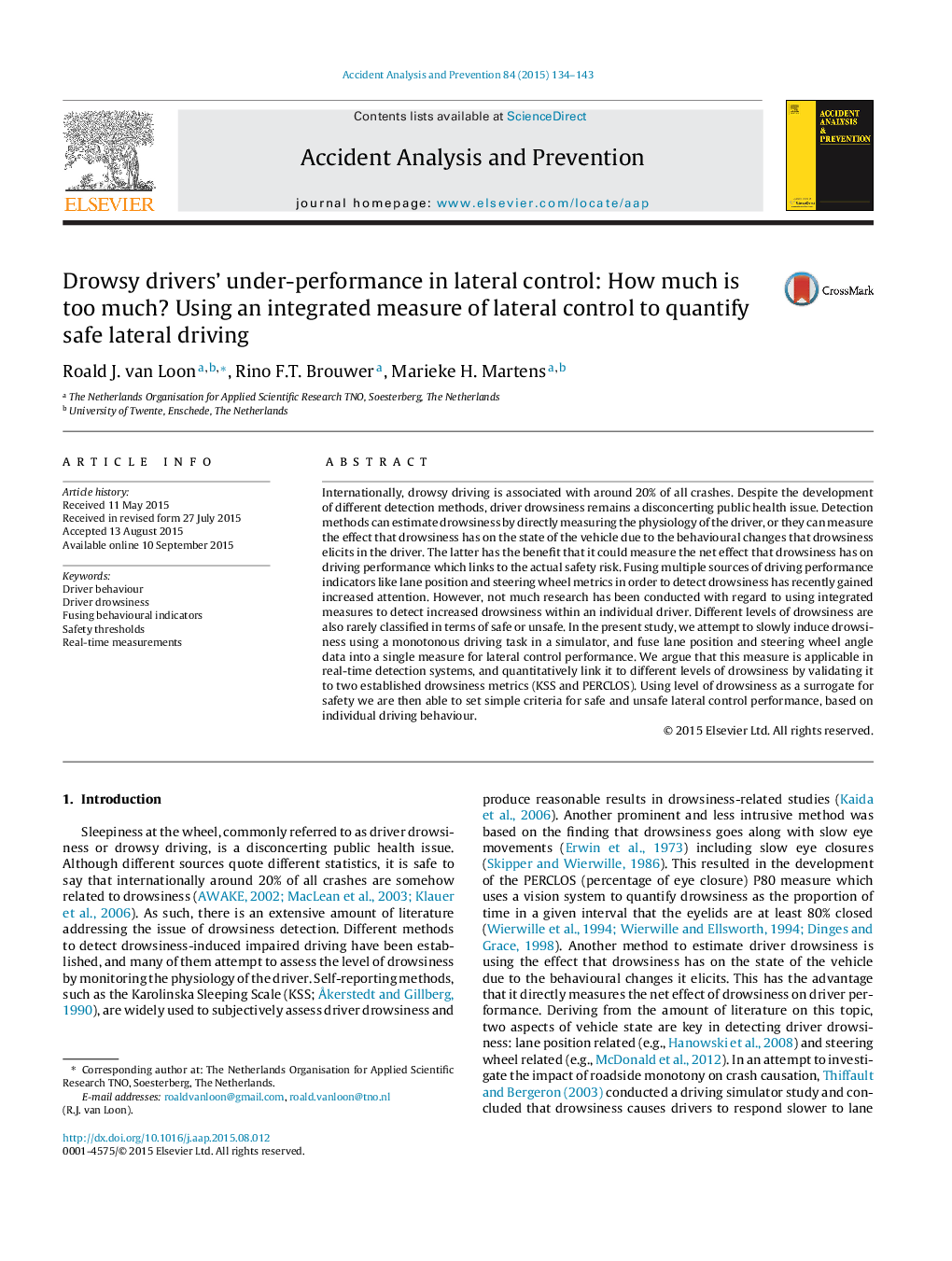| Article ID | Journal | Published Year | Pages | File Type |
|---|---|---|---|---|
| 6965471 | Accident Analysis & Prevention | 2015 | 10 Pages |
Abstract
Internationally, drowsy driving is associated with around 20% of all crashes. Despite the development of different detection methods, driver drowsiness remains a disconcerting public health issue. Detection methods can estimate drowsiness by directly measuring the physiology of the driver, or they can measure the effect that drowsiness has on the state of the vehicle due to the behavioural changes that drowsiness elicits in the driver. The latter has the benefit that it could measure the net effect that drowsiness has on driving performance which links to the actual safety risk. Fusing multiple sources of driving performance indicators like lane position and steering wheel metrics in order to detect drowsiness has recently gained increased attention. However, not much research has been conducted with regard to using integrated measures to detect increased drowsiness within an individual driver. Different levels of drowsiness are also rarely classified in terms of safe or unsafe. In the present study, we attempt to slowly induce drowsiness using a monotonous driving task in a simulator, and fuse lane position and steering wheel angle data into a single measure for lateral control performance. We argue that this measure is applicable in real-time detection systems, and quantitatively link it to different levels of drowsiness by validating it to two established drowsiness metrics (KSS and PERCLOS). Using level of drowsiness as a surrogate for safety we are then able to set simple criteria for safe and unsafe lateral control performance, based on individual driving behaviour.
Related Topics
Physical Sciences and Engineering
Chemical Engineering
Chemical Health and Safety
Authors
Roald J. van Loon, Rino F.T. Brouwer, Marieke H. Martens,
